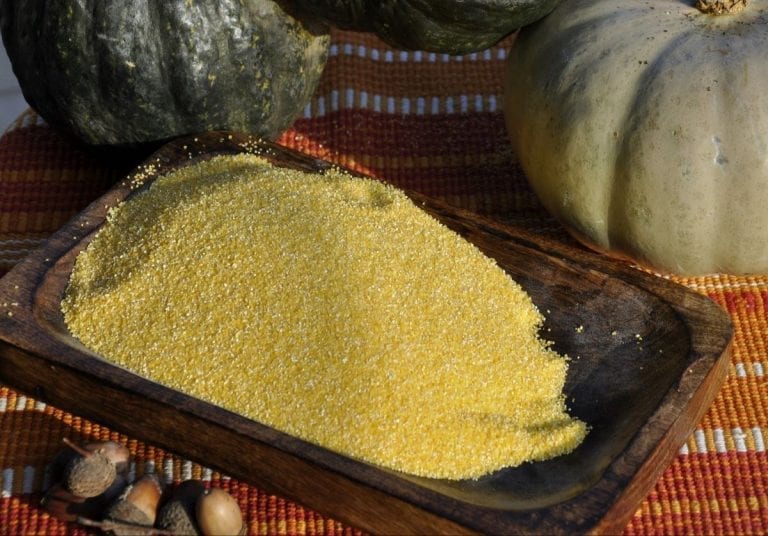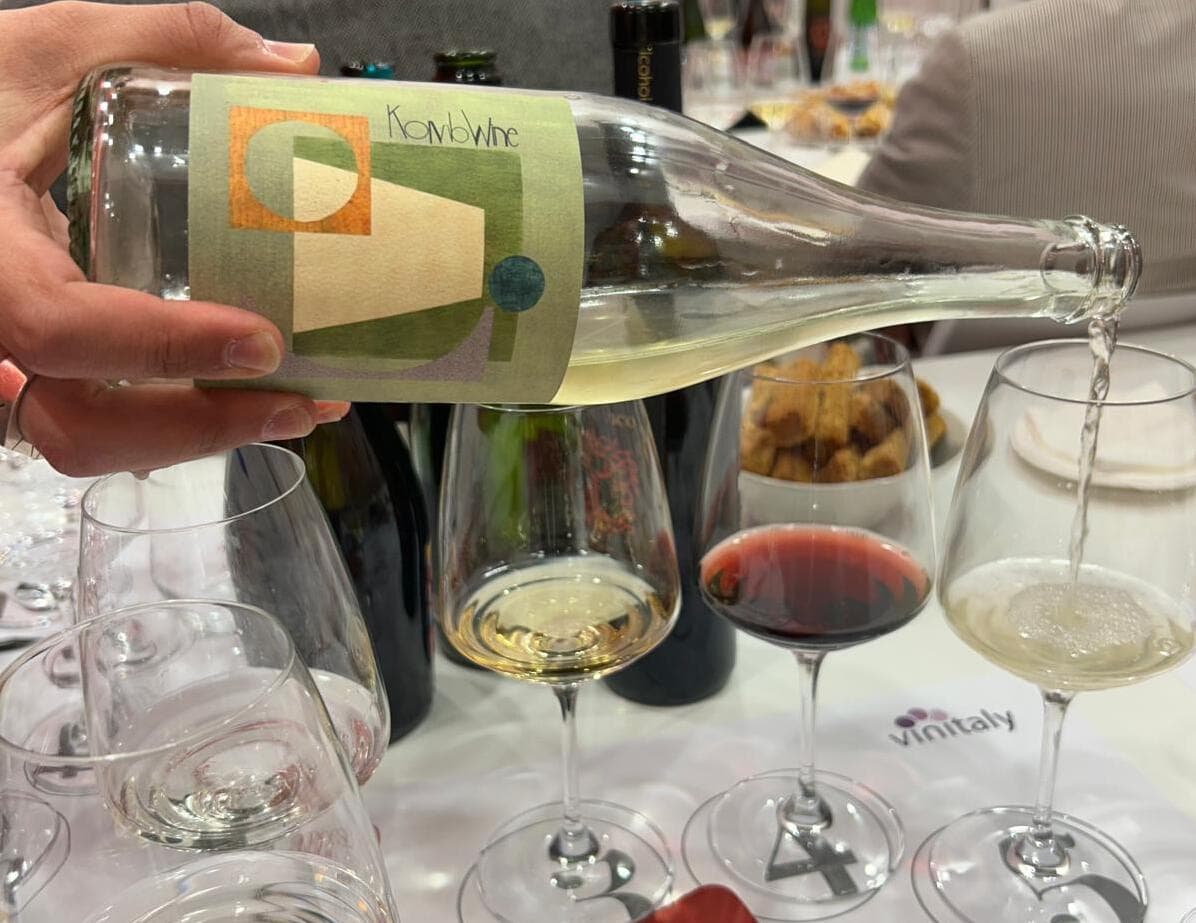Just a bag of corn flour (plus a little time and a smidgen of kitchen know how) can turn Sunday lunch into a feast with a nice plate of steaming polenta. Or, on the other hand, if you'd like to organize a Tex-Mex-style dinner, preparing burritos. In any case, corn flour is one of those ingredients capable of inducing even the laziest to experiment in the kitchen and - given the absence of gluten - it lends itself to the creation of dishes suitable for everyone, including coeliacs. Have we convinced you? If you want to learn more, here are all the instructions.
Choosing corn flour
To avoid making mistakes, just read the wording on the label carefully. The most common types on the market are bramata, fioretto and fumetto. The first is coarsely ground after removing the integument (husk that covers the kernel). This is a "raw" product, ideal for preparing rustic dishes such as polenta topped with full-bodied sauces, and which requires longer cooking times. The colour varies from deep yellow to white, depending on the amount of carotenoids present in the corn. At the opposite end of the refining scale is the fumetto variety, very similar to wheat flour; we recommend using it for pastries, shortcrust and leavened doughs: it will give them a homogeneous and impalpable consistency. A good compromise is represented by the fioretto corn flour, medium grain size, perfect for cooking a fine and creamy "accompaniment" style of polenta: choose it if you don't like the classic version or want to offer it to younger children. And what about instant polenta? In most cases brands sell pre-steamed bramata flour: a clever expedient for those who have little desire to spend hours in the kitchen, waiting for the corn flour to absorb all the water required by the traditional recipe, stirring. The result, however, differs a lot in terms of taste and texture: since working bramata corn flour from scratch is a labour of love!
Corn flour properties
At the end of the 18th century the almost exclusive use of corn flour by the less affluent was one of the triggering causes of pellagra, a disease linked to the malabsorption of B vitamins, particularly widespread in the Veneto and Friuli regions. Fortunately, this is now a thing of the past: the abundance and variety of today's diet avert any risk. On the contrary, the most recent scientific studies on the composition of corn flour highlight its excellent nutritional values: corn flour is a natural source of phosphorus, potassium, carotenoids such as zeaxanthin (with antioxidant action) and monounsaturated fatty acids. Furthermore, the moderate level of fiber guarantees a high sense of satiety - this explains why polenta “fills you up immediately” - and effectively counteracts constipation.
False beliefs on corn flour
To dispel the commonplace belief that, since it is a low protein ingredient (unlike other gluten free flours, such as chickpeas or lupins), corn flour should be used sporadically. Actually it's enough to just be careful to combine it correctly with foods that contain adequate amounts of protein - not only meat, but also legumes and green leafy vegetables - for healthy and nutritious complete meal dishes. As for the energy intake (360 Kcal per 100 g), corn flour is comparable to wheat flour, with a significant amount of carbohydrates and fewer fats than oily flours (think almond or flaxseed flours). Therefore, the popular belief according to which polenta is a particularly caloric dish is groundless: in fact, in the same quantities, it's equivalent to pasta, rice and other grains.
Savoury recipes using corn flour
Let's start with polenta, a symbolic dish of northern Italy and a winter staple, commonly associated with the suggestion of high-altitude landscapes and hot meals consumed in the malghe mountain farmsteads. Given the dish's popularity, there are numerous variations, that include polenta concia, that is seasoned with melted butter and mountain cheeses; taragna, i.e. composed of a mix of flours (corn and buckwheat) and thickened in the typical copper pot, in the Lombard manner. Also noteworthy is the variety of recipes popular throughout the region to reuse leftover polenta, among which polenta and Parmigiano crackers, polenta gnocchi and the delectable toasted polenta topped with lardo. The list goes on, but there are other corn flour-based foods that are worth dwelling on as well. For example, have you ever tasted corn fritters or corn bread? The latter is beloved in both sweet and savoury versions: it takes little time and is cooked in a classic plum cake mold. If you are planning a Sunday lunch that is different from the usual, you can opt for "cecamariti" with gravy (square section spaghetti) or for "pizza e foje" soup typical of Abruzzo made with the recipe by Adriano del Mastro.
Desserts made with corn flour
Among the yeast-free desserts are paste di meliga, biscuits made with butter and corn flour, typical of the areas of Biella, Cuneo and the lower Val di Susa (similar to krumiri, but baked in the shape of a donut), and the diamond-shaped Venetian zaleti, also buttery and rich in sultanas (one of the favourite desserts of the famous playwright Carlo Goldoni). Also worth trying are beccute from the Marche region, made with olive oil and mistrà–an anise-flavoured liqueur widely spread throughout the region–plus the meini or "oss da mort," (bones of the dead) prepared on All Saints day in the Lodi area. If, on the other hand, you prefer soft and airy desserts, the "amor di polenta" is for you: a cake originally from Varese, made soft by a mix of corn flour, almond flour and cornstarch. Try it for breakfast with a cup of hot chocolate, it's worth it!
Tacos with cornmeal recipe by Blind Pig
Pub, cocktail bar and gourmet meeting place. Who doesn't know Blind Pig in Rome? This restaurant in the San Giovanni area is the ideal place to enjoy refreshing drinks and savour brunch full of appetizing dishes (not surprisingly, we have included it in the list of the best brunch places in Rome). Among the cult dishes also Mexican tacos with octopus, of which we share the recipe.
Ingredients for the tacos
300 g corn flour
200 g “0” type flour
280 g water
20g extra virgin olive oil
10 g salt
Pinch of bicarbonate
Ingredients for the filling
200 g octopus
Half a celery rib
Half a carrot
1 bay leaf
1 slice of white onion
200 g potatoes
Chilli pepper to taste
Salt to taste
Extra virgin olive oil to taste
Mix olive oil and water with the corn flour and knead until the mixture is smooth and elastic. Let the dough rest in plastic warp for about 15 minutes. After, roll it out 2 millimeter thin and use a cookie cutter to obtain discs of the desired size. Heat a large amount of seed oil in a thick-bottomed pot and dip the tacos in it; after a few minutes, fold the corn tortilla so that it takes its classic shape. Leave to rest on kitchen paper.
Heat a large pot with water, onion, celery, carrot and the bay leaf. Once it reaches a rolling boil, dip the octopus in it. In order to make the tentacles curl dip in and out of the boiling broth, do this 3-4 times. Once ready, drain and set aside a cup of the cooking water. Immerse the octopus in ice to make it harden and immediately after sear it on a red-hot griddle for 3-4 minutes per side. Cut the potatoes into cubes and boil them in the reserved octopus cooking water. Cut the octopus into cubes, add the potatoes and season with olive oil, salt and parsley.
Over-stuff the tacos with the filling.
Blind Pig – Rome - Via La Spezia, 72 – Facebook Page
by Lucia Facchini


 Versace opens a super hotel with an Italian restaurant. Here's what Donatella Hotel & Restaurant in Miami will be like
Versace opens a super hotel with an Italian restaurant. Here's what Donatella Hotel & Restaurant in Miami will be like At The Crown Tirana, service and quality at the highest levels
At The Crown Tirana, service and quality at the highest levels We tasted Komb(w)ine, the new product that combines grape must and kombucha. Here’s our verdict
We tasted Komb(w)ine, the new product that combines grape must and kombucha. Here’s our verdict What changes for the export of Italian wines to China under the new regulations?
What changes for the export of Italian wines to China under the new regulations? “Forget dealcoholised wines. The future is Komb(w)ine.” Moser and Ravizza present a new grape must-based product
“Forget dealcoholised wines. The future is Komb(w)ine.” Moser and Ravizza present a new grape must-based product






